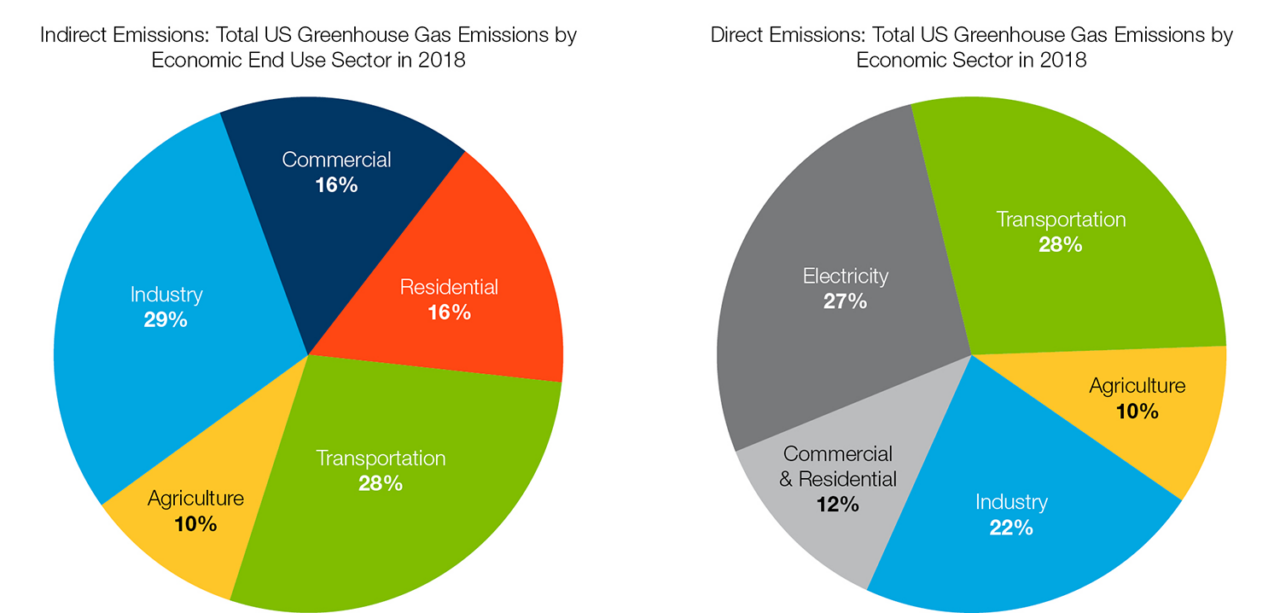What role do buildings play in the region’s emissions?

Decarbonization of buildings will require reducing both direct and indirect emissions. Direct carbon emissions from fossil fuel use in buildings are attributable primarily to space and water heating. Direct emissions from the commercial and residential buildings sector, as shown in the figure below are about 12 percent of all direct emissions by sector. When indirect emissions from electricity generation are included, emissions from the commercial and residential sectors made up nearly one-third of US greenhouse gas emissions in 2018. Emissions from buildings have been relatively flat since 2010. Though this road map is focused on direct emissions, it is important to note that electricity use in buildings is also indirectly responsible for carbon emissions at power plants and will continue to be as long as electricity has carbon emissions. This underscores the importance of decarbonizing the electricity sector by midcentury or sooner.
Proportion of Indirect and Direct Greenhouse Gas Emissions across Sectors in the United States


From frozen lakes to the Gulf Coast
Heating and cooling demands of buildings are inextricably linked to climate. The milder climate of the south means heating demand is lowest in that part of the region. That lower demand has led to a much greater reliance on electricity for heating, as shown in the figure below, including on high efficiency heat pumps. In contrast, the colder winters in the north mean greater reliance on fossil fuels to heat buildings and less heat pump penetration to date. The climate differences across the region mean that it will be more challenging to electrify buildings in the northern, colder part of the region than it will be in the south.
Heat Pump Penetrationin Northern and Southern Parts of Midcontinent According to 2018 American Housing Survey


